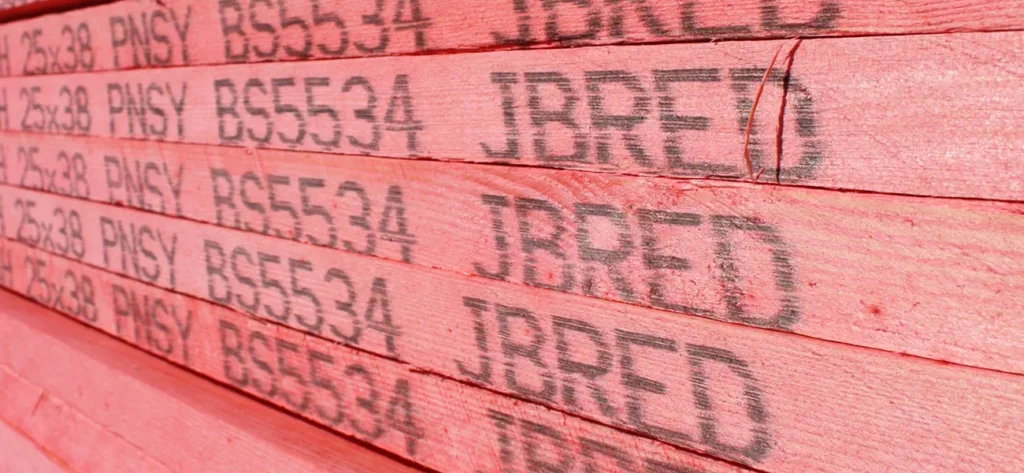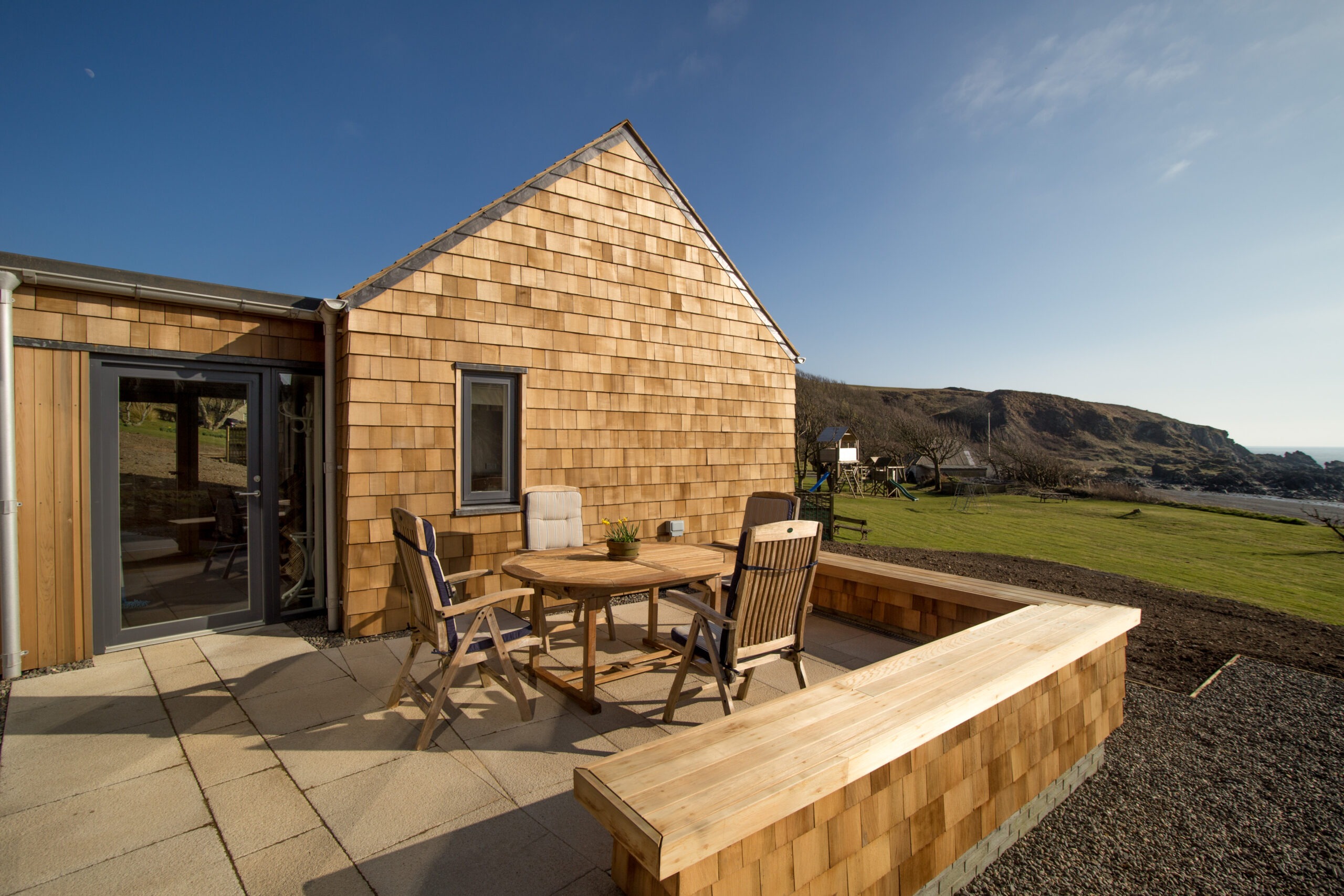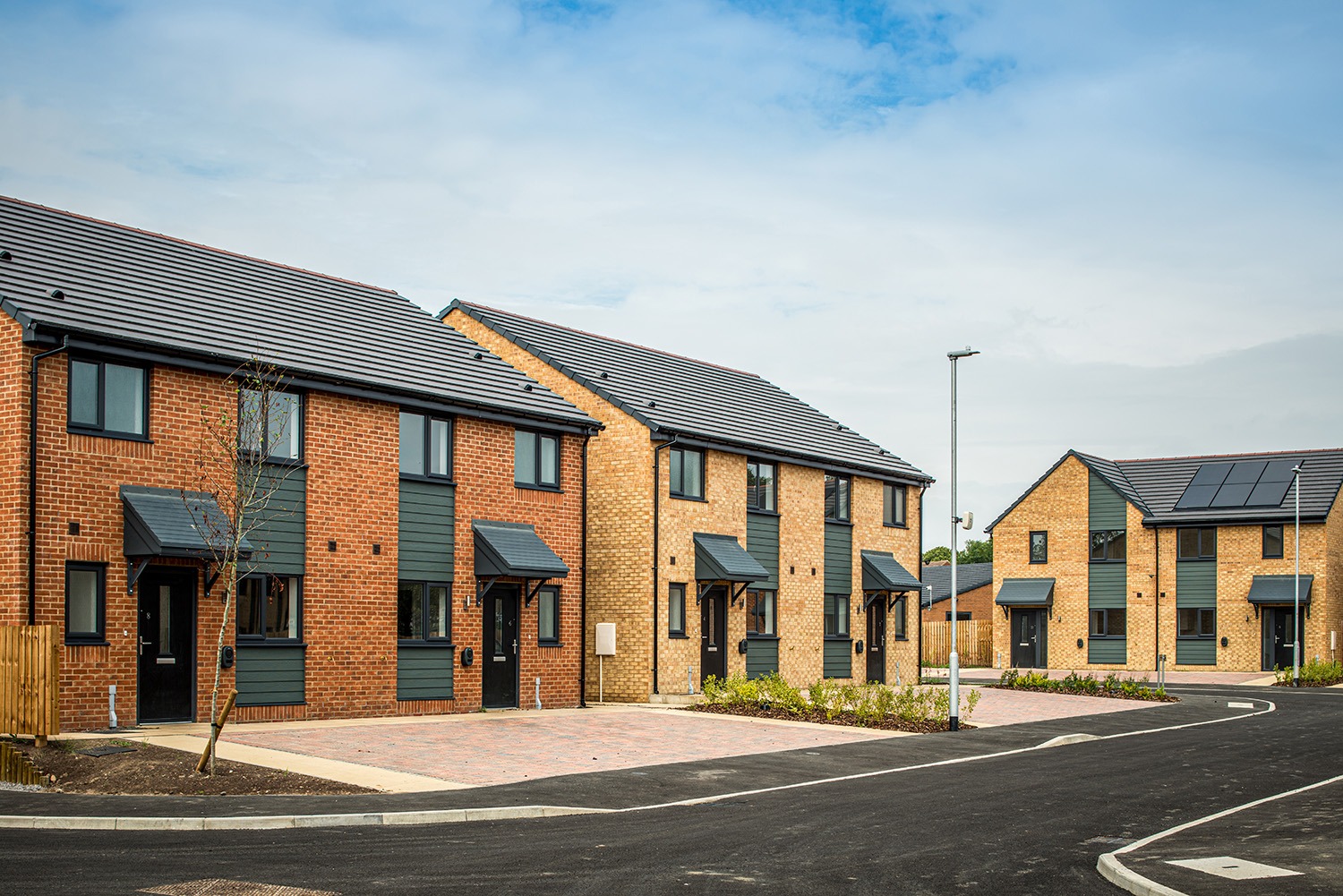When selecting timber roof battens, having a BPR label (Biocidal Products Regulation) can help to ensure the chosen products provide suitable performance, both in terms of quality and safety.
Safety on a building site is always of paramount importance. While roofers are aware of the risks associated with working at height, there are other risks to consider, such as exposure to chemicals used in the manufacture of building materials.
Timber roof battens, for example, contain various chemicals to help preserve the wood and protect the roof’s long-term viability. In a responsibly manufactured product, the presence of biocides should be safe. However, low quality standards among some products mean that the type and concentration of those biocides can vary, and in some cases, they may be dangerous.
Stuart Nicholson, roof systems director at Marley, explains: “Responsible manufacturers use preservative treatments that have been tested for longevity and safety, but in recent years, there has been an influx of substandard products entering the UK market. Some of these inferior products seem to have caused injuries to roofing contractors or have not been up to the standards required for roofing applications.”
The presence of a BPR label, therefore, is one indicator to look for when determining the quality of timber roof battens and the reliability of a manufacturer. It also gives valuable information to those who use the products.
What is a BPR label?
The GB Biocidal Products Regulation (GB BPR) defines how products that contain biocides should be packaged and labelled.
The requirements for BPR labelling are extensive, and full details are available on the HSE website. What specifiers need to know is that the label should provide comprehensive information about the biocides used in the product, including:
- The identity and classification of the biocides
- The identity and classification of the biocides
- The concentration of those biocides in metric units
- Any hazard and precautionary statements
- Details of possible side effects
Stuart adds: “The full list of requirements for a BPR label is lengthy, and the label will provide critical details about the safe storage, transportation and use of the timber roof battens.”
Why is a BPR label important for timber roof battens?
BPR labels provide crucial safety and handling information. For timber roof battens, this is important because some products may contain preservative treatments that can leach out of the timber, which could lead to injuries to roofing contractors and may compromise the roof build-up.
As mentioned above, there have been reports of substandard building materials entering the UK market. Stuart explains: “This is a result of several factors that have disrupted supply chains, including the Covid-19 pandemic, Brexit and the conflict in Ukraine. Now, there is concern that many of those low-quality products may be causing health risks to those who come into contact with them.”
In January, Roofing Today reported: “Thousands of reported cases have surfaced, showing tradesmen suffering from severe skin burns due to exposure to these harmful chemicals.” It is suspected that these injuries were caused by exposure to Permethrin, a biocide sometimes used as a wood preservative. Permethrin may also damage roof membranes if it leaches out of the timber battens, putting the roof’s weatherproofing at risk.
The Wood Protection Association has released a statement, noting that it intends to investigate these concerns and suggests that users of timber roofing battens should only buy products that have been treated with approved substances. This information should be included on a BPR label: “Suppliers of treated wood will be able to provide product-specific handling information and instructions, and this is provided on the pack label,” the statement explains.
The WPA’s statement warns: “Do not buy any material of dubious origin not knowing what it has been treated with. It also suggests: “When handling treated wood, precautions are generally the same as untreated wood and include wearing gloves plus a dust mask and goggles if machining and creating dust.”
Stuart notes that if a timber roof batten lacks a BPR label, it could be lacking in other areas as well. For example, “The strength of the battens may not be enough to support the roofing contractors who install the roof tiles, leading to dangerous work conditions and fall hazards, or the finished roof may not provide the expected performance or longevity.”
Beyond the BPR label: What else to look for when choosing timber battens
The BPR label isn’t the only indicator of the quality and suitability of timber roof battens. Relevant products should also be marked according to BS 5534:2014+A2:2018, the code of practice for slating and tiling for pitched roofs and vertical cladding.
BS 5534 states that all graded roofing battens should be individually marked with supplier details, the size of the batten, the species of wood and BS 5534 compliance stamp. Third-party certification may also be included if relevant.
While correct marking and labelling can be a sign of quality, unfortunately, there have been cases of counterfeit products being sold with false documentation.
As mentioned above, there have been reports of substandard building materials entering the UK market. Stuart explains: “This is a result of several factors that have disrupted supply chains, including the Covid-19 pandemic, Brexit and the conflict in Ukraine. Now, there is concern that many of those low-quality products may be causing health risks to those who come into contact with them.”
In January, Roofing Today reported: “Thousands of reported cases have surfaced, showing tradesmen suffering from severe skin burns due to exposure to these harmful chemicals.” It is suspected that these injuries were caused by exposure to Permethrin, a biocide sometimes used as a wood preservative. Permethrin may also damage roof membranes if it leaches out of the timber battens, putting the roof’s weatherproofing at risk.
The Wood Protection Association has released a statement, noting that it intends to investigate these concerns and suggests that users of timber roofing battens should only buy products that have been treated with approved substances. This information should be included on a BPR label: “Suppliers of treated wood will be able to provide product-specific handling information and instructions, and this is provided on the pack label,” the statement explains.
The WPA’s statement warns: “Do not buy any material of dubious origin not knowing what it has been treated with. It also suggests: “When handling treated wood, precautions are generally the same as untreated wood and include wearing gloves plus a dust mask and goggles if machining and creating dust.”
Stuart notes that if a timber roof batten lacks a BPR label, it could be lacking in other areas as well. For example, “The strength of the battens may not be enough to support the roofing contractors who install the roof tiles, leading to dangerous work conditions and fall hazards, or the finished roof may not provide the expected performance or longevity.”
Beyond the BPR label: What else to look for when choosing timber battens
The BPR label isn’t the only indicator of the quality and suitability of timber roof battens. Relevant products should also be marked according to BS 5534:2014+A2:2018, the code of practice for slating and tiling for pitched roofs and vertical cladding.
BS 5534 states that all graded roofing battens should be individually marked with supplier details, the size of the batten, the species of wood and BS 5534 compliance stamp. Third-party certification may also be included if relevant.
While correct marking and labelling can be a sign of quality, unfortunately, there have been cases of counterfeit products being sold with false documentation and information printed on the timber roofing battens. Therefore, it’s essential to source products from reputable suppliers, and it’s a good idea to do your own checks too.
Here are some things to consider when selecting timber roof battens:
- Thickness – Timber roof battens should be 25mm thick with a tolerance of -0/+3mm. When it comes to roofing batten sizes, there should be no noticeable differences between battens, if there are visible differences, then this is a sign that the products should not be used.
- Knots – BS 5534 gives guidance on the acceptable number of knots in timber roof battens. If the battens seem excessively knotty or have very large knots, it’s an indicator that they may not be up to standard.
- Marking – As mentioned above, each individual batten should be marked according to BS 5534. If a batch of battens is bound together and marked with a single stamp, that is a sign that they are not legitimate products. Documentation should also be readily available from the supplier.
- Rot – Timber roof battens should be free from rot or decay.
Stuart also warns that the colouring of battens is no longer a reliable sign of quality: “Some manufacturers use colour to indicate that their timber battens are suitable for roofing applications. Here at Marley, our JB Red timber roof battens have a distinctive red colouring that should make them easy to spot. Unfortunately, counterfeit products have been found imitating that characteristic. So while a red colour might be a sign of Marley quality, it’s not the only thing you should look for when purchasing timber roof battens.”
BPR labels and Marley timber roof battens
The risks of using non-compliant timber roof battens are many, from chemical burns and substandard roof constructions to fall hazards for roofing contractors. With so many causes for concern, the need for high-quality and reliable roofing battens with the necessary BPR labelling is clear.
Our JB Red battens are for roofing applications and are preservative-treated to BS 8417:2011 (Preservation of Wood Code of Practice). Usage Class 2 using MicroPro®, which protects against wood-rotting fungi and insects. They are factory-graded in the UK to BS 5534 and BBA Certified.




